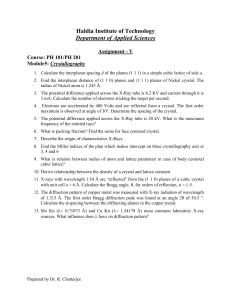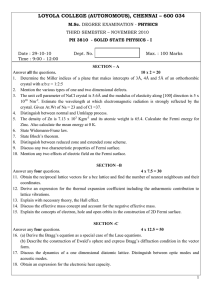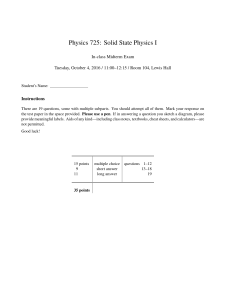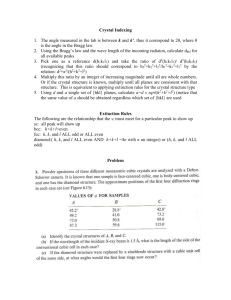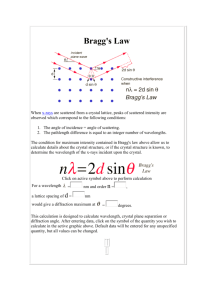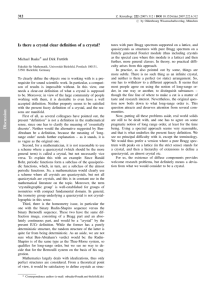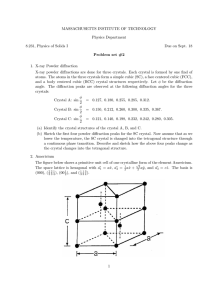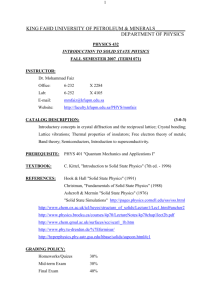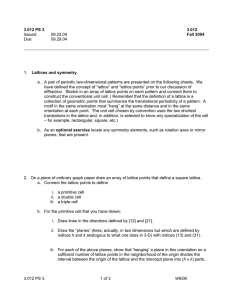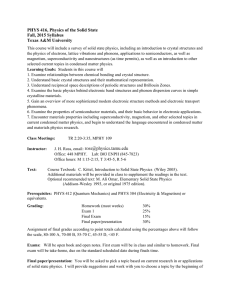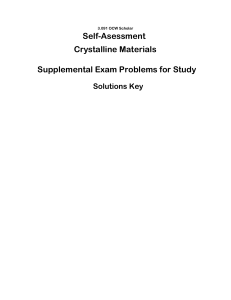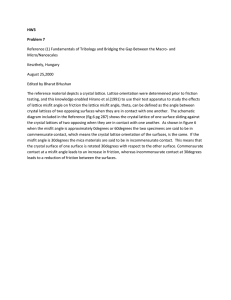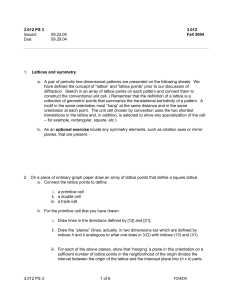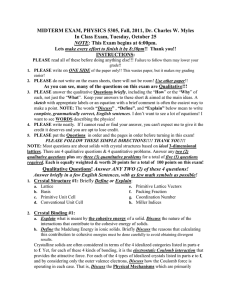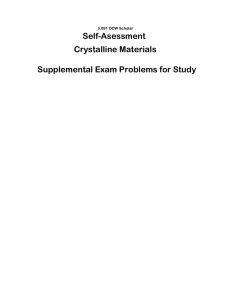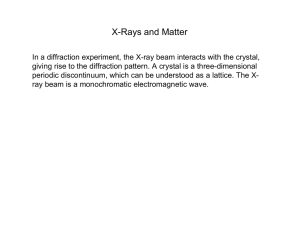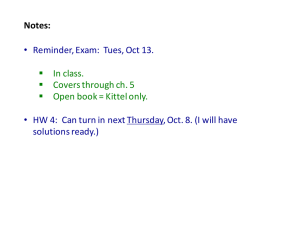Solid State Chemistry Exercise-3-SS-2011-27/06/20011
advertisement
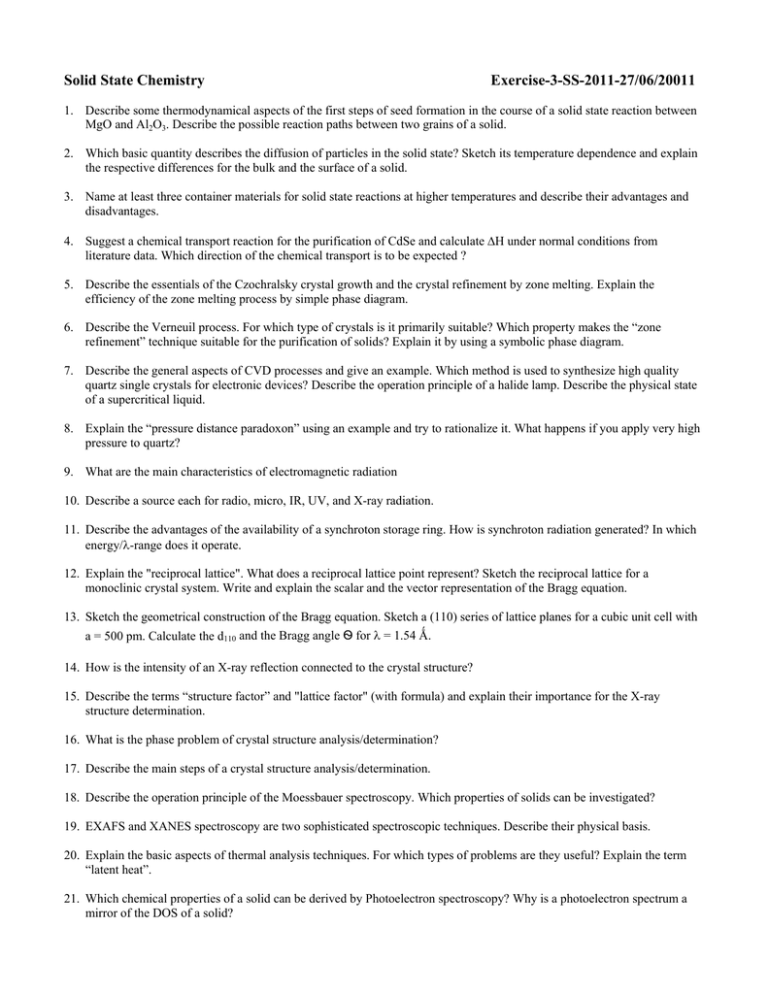
Solid State Chemistry Exercise-3-SS-2011-27/06/20011 1. Describe some thermodynamical aspects of the first steps of seed formation in the course of a solid state reaction between MgO and Al2O3. Describe the possible reaction paths between two grains of a solid. 2. Which basic quantity describes the diffusion of particles in the solid state? Sketch its temperature dependence and explain the respective differences for the bulk and the surface of a solid. 3. Name at least three container materials for solid state reactions at higher temperatures and describe their advantages and disadvantages. 4. Suggest a chemical transport reaction for the purification of CdSe and calculate ΔH under normal conditions from literature data. Which direction of the chemical transport is to be expected ? 5. Describe the essentials of the Czochralsky crystal growth and the crystal refinement by zone melting. Explain the efficiency of the zone melting process by simple phase diagram. 6. Describe the Verneuil process. For which type of crystals is it primarily suitable? Which property makes the “zone refinement” technique suitable for the purification of solids? Explain it by using a symbolic phase diagram. 7. Describe the general aspects of CVD processes and give an example. Which method is used to synthesize high quality quartz single crystals for electronic devices? Describe the operation principle of a halide lamp. Describe the physical state of a supercritical liquid. 8. Explain the “pressure distance paradoxon” using an example and try to rationalize it. What happens if you apply very high pressure to quartz? 9. What are the main characteristics of electromagnetic radiation 10. Describe a source each for radio, micro, IR, UV, and X-ray radiation. 11. Describe the advantages of the availability of a synchroton storage ring. How is synchroton radiation generated? In which energy/λ-range does it operate. 12. Explain the "reciprocal lattice". What does a reciprocal lattice point represent? Sketch the reciprocal lattice for a monoclinic crystal system. Write and explain the scalar and the vector representation of the Bragg equation. 13. Sketch the geometrical construction of the Bragg equation. Sketch a (110) series of lattice planes for a cubic unit cell with a = 500 pm. Calculate the d110 and the Bragg angle Ѳ for λ = 1.54 Ǻ. 14. How is the intensity of an X-ray reflection connected to the crystal structure? 15. Describe the terms “structure factor” and "lattice factor" (with formula) and explain their importance for the X-ray structure determination. 16. What is the phase problem of crystal structure analysis/determination? 17. Describe the main steps of a crystal structure analysis/determination. 18. Describe the operation principle of the Moessbauer spectroscopy. Which properties of solids can be investigated? 19. EXAFS and XANES spectroscopy are two sophisticated spectroscopic techniques. Describe their physical basis. 20. Explain the basic aspects of thermal analysis techniques. For which types of problems are they useful? Explain the term “latent heat”. 21. Which chemical properties of a solid can be derived by Photoelectron spectroscopy? Why is a photoelectron spectrum a mirror of the DOS of a solid?
